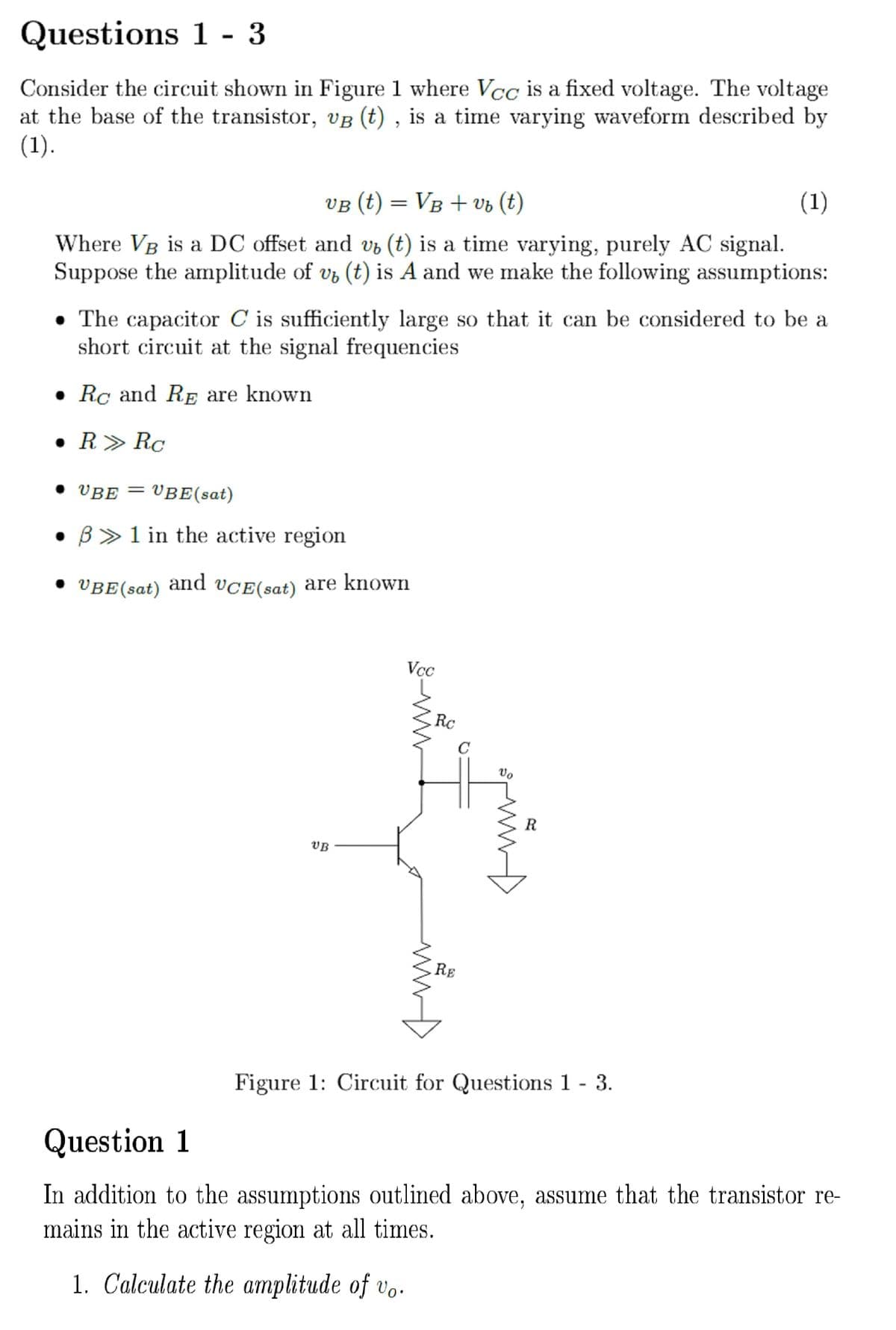Figure 1: Circuit for Questions 1 - 3. Question 1 In addition to the assumptions outlined above, assume that the transistor re- mains in the active region at all times. 1. Calculate the amplitude of vo.
Figure 1: Circuit for Questions 1 - 3. Question 1 In addition to the assumptions outlined above, assume that the transistor re- mains in the active region at all times. 1. Calculate the amplitude of vo.
Introductory Circuit Analysis (13th Edition)
13th Edition
ISBN:9780133923605
Author:Robert L. Boylestad
Publisher:Robert L. Boylestad
Chapter1: Introduction
Section: Chapter Questions
Problem 1P: Visit your local library (at school or home) and describe the extent to which it provides literature...
Related questions
Question
Find the answer (in Volts) to Question 1 in the attached image where:
VCC = 22 Volts, RC = 7.1 kOhms, RE = 1.9 kOhms,
VBE(sat) = 0.7 Volts, VCE(sat) = 0.2 Volts,
VB = 8 Volts and A = 1.4 Volts.
Provide your answer rounded to 2 decimal places.

Transcribed Image Text:Questions 1-3
Consider the circuit shown in Figure 1 where Vcc is a fixed voltage. The voltage
at the base of the transistor, v (t), is a time varying waveform described by
(1).
VB (t) = VB + vb (t)
UB
Where VB is a DC offset and vz (t) is a time varying, purely AC signal.
Suppose the amplitude of v, (t) is A and we make the following assumptions:
• The capacitor C is sufficiently large so that it can be considered to be a
short circuit at the signal frequencies
• Rc and RE are known
• R» Rc
• UBE= VBE (sat)
. 1 in the active region
• UBE(sat) and VCE(sat) are known
UB
Vcc
Rc
C
RE
qui
(1)
R
Figure 1: Circuit for Questions 1 - 3.
Question 1
In addition to the assumptions outlined above, assume that the transistor re-
mains in the active region at all times.
1. Calculate the amplitude of vo.
Expert Solution
This question has been solved!
Explore an expertly crafted, step-by-step solution for a thorough understanding of key concepts.
Step by step
Solved in 4 steps with 3 images

Knowledge Booster
Learn more about
Need a deep-dive on the concept behind this application? Look no further. Learn more about this topic, electrical-engineering and related others by exploring similar questions and additional content below.Recommended textbooks for you

Introductory Circuit Analysis (13th Edition)
Electrical Engineering
ISBN:
9780133923605
Author:
Robert L. Boylestad
Publisher:
PEARSON

Delmar's Standard Textbook Of Electricity
Electrical Engineering
ISBN:
9781337900348
Author:
Stephen L. Herman
Publisher:
Cengage Learning

Programmable Logic Controllers
Electrical Engineering
ISBN:
9780073373843
Author:
Frank D. Petruzella
Publisher:
McGraw-Hill Education

Introductory Circuit Analysis (13th Edition)
Electrical Engineering
ISBN:
9780133923605
Author:
Robert L. Boylestad
Publisher:
PEARSON

Delmar's Standard Textbook Of Electricity
Electrical Engineering
ISBN:
9781337900348
Author:
Stephen L. Herman
Publisher:
Cengage Learning

Programmable Logic Controllers
Electrical Engineering
ISBN:
9780073373843
Author:
Frank D. Petruzella
Publisher:
McGraw-Hill Education

Fundamentals of Electric Circuits
Electrical Engineering
ISBN:
9780078028229
Author:
Charles K Alexander, Matthew Sadiku
Publisher:
McGraw-Hill Education

Electric Circuits. (11th Edition)
Electrical Engineering
ISBN:
9780134746968
Author:
James W. Nilsson, Susan Riedel
Publisher:
PEARSON

Engineering Electromagnetics
Electrical Engineering
ISBN:
9780078028151
Author:
Hayt, William H. (william Hart), Jr, BUCK, John A.
Publisher:
Mcgraw-hill Education,